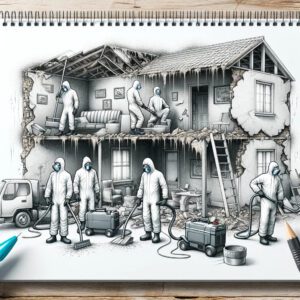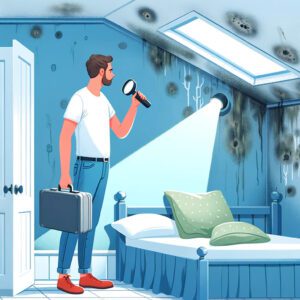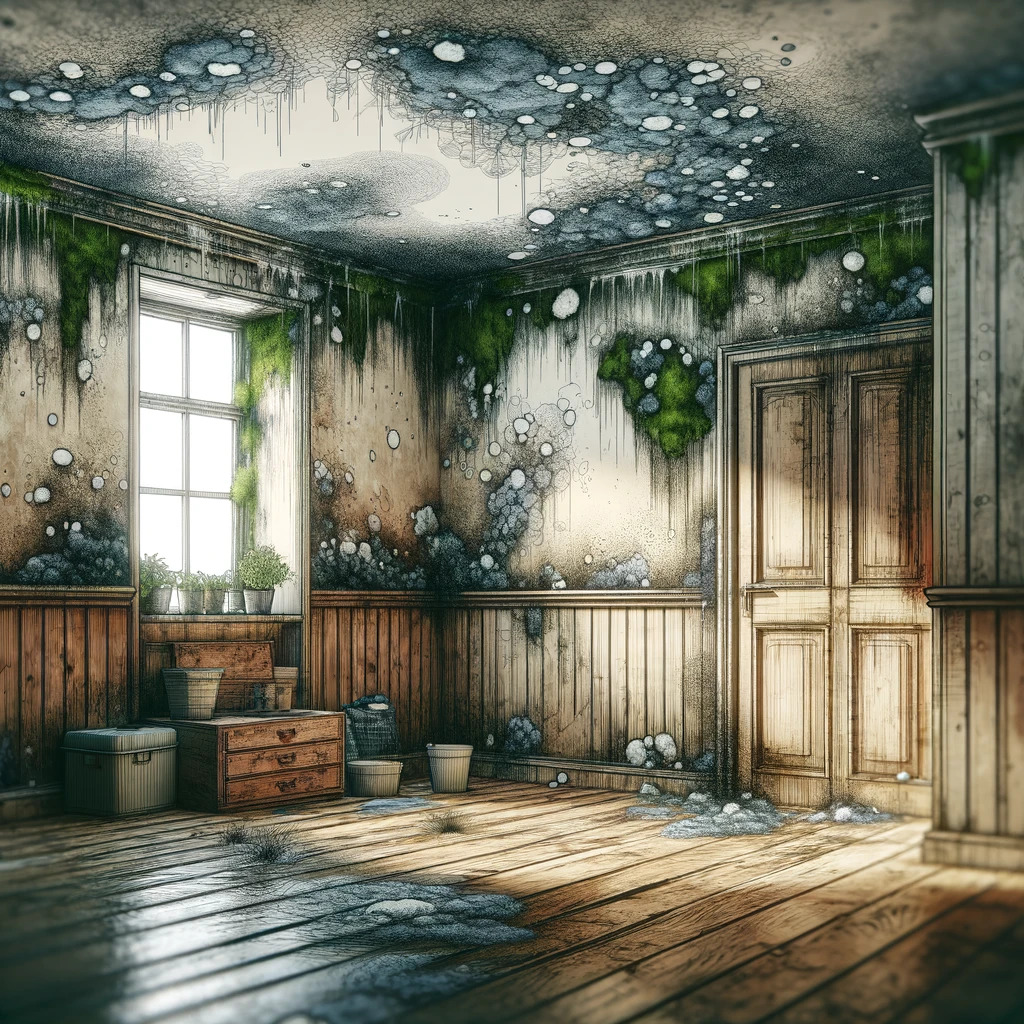Tackling Mold Issues in Old Houses: Prevention and Remediation
Article on behalf of RenovationServices.com
Introduction
Renovating an old house is a journey through history, uncovering the stories and secrets embedded in its walls. However, this journey can also reveal unwelcome guests like mold, a common problem in older homes. Mold not only poses health risks but can also cause structural damage. Understanding how to prevent and remediate mold is crucial for any renovator.
The Prevalence of Mold in Old Houses
Mold thrives in moist, poorly ventilated environments, conditions often found in older homes. These structures may have outdated plumbing and HVAC systems, contributing to moisture buildup. Recognizing the signs of mold and understanding its causes is the first step in tackling this issue.
Identifying Mold in Your Home
Mold can manifest in various forms, from visible patches on walls and ceilings to musty odors. Some common signs include:
- Discoloration or staining on surfaces
- Warping or peeling of wallpaper or paint
- A persistent musty, earthy smell

Health Implications of Mold Exposure
Exposure to mold can lead to health problems, particularly for individuals with allergies, asthma, or weakened immune systems. According to the U.S. Centers for Disease Control and Prevention (CDC), mold exposure can cause nasal stuffiness, throat irritation, coughing or wheezing, eye irritation, or skin irritation. In more severe cases, it can lead to serious lung infections.
(Source: CDC – Mold)
Preventing Mold Growth
Prevention is key in managing mold issues. Steps include:
- Ensuring proper ventilation in high-moisture areas like bathrooms and kitchens
- Regularly inspecting and maintaining plumbing and HVAC systems to prevent leaks
- Using dehumidifiers in damp areas
Initial Steps in Mold Remediation
If you discover mold in your home, addressing it promptly is vital. For small areas:
- Wear protective gear, including gloves, goggles, and masks
- Use a solution of water and detergent to clean non-porous surfaces
- Avoid using bleach, as it does not prevent mold from returning
Professional Mold Remediation
For extensive mold problems, especially those involving porous materials like drywall or insulation, professional remediation is essential. Qualified mold remediation specialists will:
- Conduct a thorough assessment to determine the extent of the problem
- Use specialized equipment to safely remove mold-infested materials
- Employ air filtration devices to capture airborne mold spores
- Ensure proper disposal of contaminated materials
Legal and Safety Considerations in Mold Remediation
When dealing with mold in rental properties or commercial buildings, it’s crucial to be aware of legal obligations. Property owners are responsible for providing a safe living environment. The U.S. Environmental Protection Agency (EPA) offers guidelines on mold remediation in schools and commercial buildings, which can also be applicable to residential settings.
(Source: EPA – Mold Remediation in Schools and Commercial Buildings)
Long-term Strategies for a Mold-Free Home
Maintaining a mold-free environment requires ongoing vigilance and the following strategies:
- Regular home inspections, especially in areas prone to moisture
- Immediate repair of any water leaks or damage
- Keeping indoor humidity levels between 30% and 50%
- Using paint with mold inhibitors in high-moisture areas

Understanding Mold Types and Their Impacts
Not all molds are created equal. Some types of mold are more harmful than others, and understanding the differences is crucial for effective remediation:
- Black Mold (Stachybotrys chartarum): Known for its severe health risks, black mold requires immediate professional attention.
- Other Common Molds: Molds like Cladosporium, Penicillium, and Aspergillus are more common and can vary in their health impacts.
Collaborating with Mold Inspection and Remediation Experts
When hiring professionals for mold inspection and remediation, consider the following:
- Credentials: Ensure they have relevant certifications and experience.
- Process Transparency: A reputable company will explain their methods and provide a detailed remediation plan.
- Post-Remediation Verification: After remediation, testing should be conducted to confirm that the mold issue has been effectively addressed.
DIY Mold Remediation: What You Should Know
While professional remediation is recommended for severe cases, here are tips for handling minor mold issues:
- Safety First: Always wear protective gear, including N95 masks, gloves, and eye protection.
- Isolate the Area: Use plastic sheeting and tape to seal off the affected area, preventing the spread of spores.
- Proper Cleaning Techniques: For non-porous surfaces, use water and detergent. Avoid using bleach as it’s ineffective in preventing mold regrowth.
The Importance of Moisture Control
Controlling indoor moisture is the most effective way to prevent mold growth. This involves:
- Regular Maintenance: Check for leaks in roofs, walls, and plumbing. Keep gutters and downspouts clean.
- Proper Ventilation: Use exhaust fans in bathrooms and kitchens. Ensure that your clothes dryer vents outside.
- Controlling Humidity: Use dehumidifiers and air conditioners, especially in hot, humid climates.
The Role of Building Materials in Mold Prevention
Choosing the right building materials can significantly reduce the risk of mold in renovations:
- Mold-Resistant Products: Opt for mold-resistant drywall, paints, and primers, especially in moisture-prone areas like bathrooms and basements.
- Proper Insulation: Properly insulating walls and attics can prevent condensation, a common cause of mold.
Handling Mold in Historic Homes
Dealing with mold in historic homes requires a delicate balance between preservation and modernization:
- Preserving Original Features: Where possible, preserve historical materials by using gentle cleaning and mold removal techniques.
- Modern Solutions for Historic Problems: Implement modern moisture-control solutions while respecting the home’s historical integrity.
Educating Yourself on Mold
Knowledge is power, especially when it comes to mold. Utilize educational resources from authoritative sources for the most current and comprehensive information:
- U.S. EPA Mold Guide: Offers in-depth information on mold prevention and remediation (epa.gov/mold).
- State and Local Health Departments: Provide localized information and resources on mold issues.

Conclusion
Mold in old houses can be a formidable challenge, but with the right approach, it’s a solvable one. By understanding the types of mold, utilizing professional services when necessary, and employing effective prevention and remediation strategies, homeowners can safeguard their homes and health against mold. Whether you’re renovating a historic gem or updating a family home, addressing mold issues is an integral part of creating a safe, healthy living environment.
RenovationServices.com is here to guide you through every step of your mold remediation journey. From expert advice to practical tips and resources, we ensure your renovation project is not just about aesthetics but also about health and safety. Visit us for more information on mold prevention and remediation in old houses, and let us help you make your renovation project a success.






